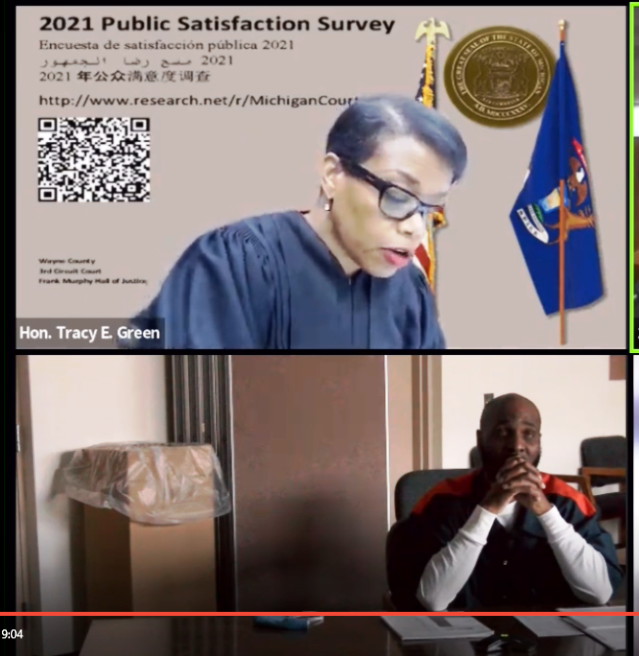
LIFER NOSAKHARE ONOMONU (bottom) REACTS WITH JOYFUL TEARS DEC. 20, 2021 AS JUDGE TRACY E. GREEN GRANTS MOTION FOR RELIEF FROM JUDGMENT
Judge Tracy E. Green granted Michigan lifer Nosakhare Onumonu’s motion for new trial Dec. 21, 2021, after his pro se presentation
Through FOIA, Onumonu acquired substantial evidence favorable to defense that had been suppressed by DPD, prosecution
Judge Green patiently examined evidence, agreed with Onumonu that if it had it been presented at trial, acquittal more likely than not
Judge Green currently on paid administrative leave pending resolution of JTC complaint, can still dispose of matters on cases previously in progress
Next hearing date July 27, 2022
By Diane Bukowski
June 29, 2022

Nosakhare Onumonu with (l to r) Niece Deserae, Mother Denise, and Sister Lisa.
DETROIT — “If it doesn’t fit, you must acquit,” O.J. Simpson’s attorney Johnnie Cochran famously told his client’s jury regarding a glove found at the scene of the 1995 murder of Nicole Brown. It didn’t fit, and Simpson was acquitted.
Nosakhare Onumonu, convicted in 2015 of the 1999 murder of 94-year-old Helen Klocek of Plymouth, MI asks a different question about the glove used to convict him–did it exist? The glove doesn’t appear in police department criminal records until 2007, and was not examined for trace DNA evidence until 2011, according to reports viewed by VOD.
The Detroit Police Department sent the glove in question to the Michigan State Police Forensic Lab for what testing of what is known as “touch trace” DNA evidence only after Onumonu was belatedly identified as a suspect in 2011.
“This whole case revolves around a glove and then it’s built on inference after inference after inference,” Onomuno told Third Circuit Court Judge Tracy E. Green at the opening of arguments on his motion for relief from judgment in 2021.
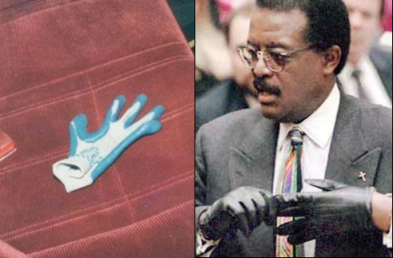
(L) Glove allegedly found in victim’s car in Onumono case; (r) Johnnie Cochran with gloves he cited in O.J. acquittal.
Acting in pro per, Onumonu continued with a powerful presentation on his case which countered subsequent media accounts depicting a depraved Black man preying on an elderly white woman. (e.g. DNA on glove helps solve 1999 Detroit cold case (clickondetroit.com).
Murder victim Klocek lived in Plymouth, Michigan and had gone out for lunch at a local restaurant before her murder. Her body was found in an alleyway behind Joy Rd. in Detroit on March 2, 1999. Her white Ford Escort car, which had been torched, was found Mar. 4 several miles away in a church parking lot on Grand River.
Onumonu’s presentation centered around his discovery of evidence that had been suppressed during his trial, in violation of Brady v. Maryland, 373 U.S. 83 (1963). That U.S. Supreme Court ruling and others which followed in its wake said all exculpatory evidence (favorable to the defense) must be promptly disclosed by police and prosecution.
In his case, a Freedom of Information Act request produced documentation hidden from his defense, largely in files from the Plymouth Police Department, including (see below).
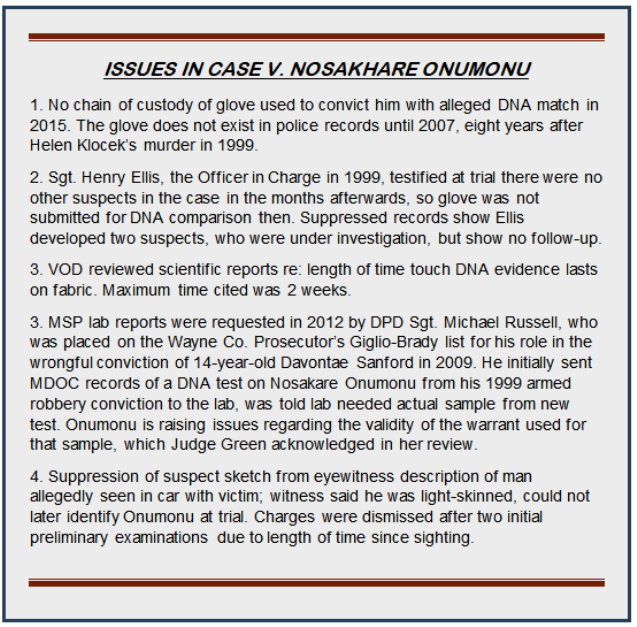
On Dec. 21, 2021, Judge Green granted Onomonu’s motion for a new trial, acknowledging three of his four claims: fraud upon the court by a detective, perjury by a detective that was significant to his conviction, and a Brady violation by withholding exculpatory evidence. She noted that it appeared Sgt. Henry Ellis and other Detroit Police officers had indeed lied about the existence of other suspects, and that suppression of evidence of those suspects and the 1999 eyewitness sketch made it more likely than not under Brady that a jury would have acquitted him if they had seen that evidence.
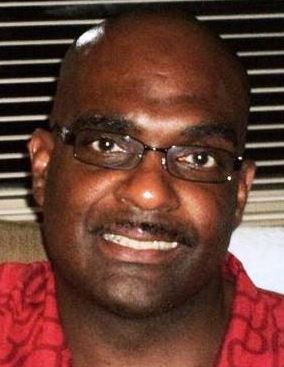
DPD Sgt. Henry Ellis, from his FB page.
Judge Green had several more hearings afterwards, with the prosecution trying to say that an evidentiary hearing instead of an immediate new trial was the proper relief. The last date she ruled on the case was June 9, 2022 according to court records. Since that time, she has been on a paid administrative leave while she resolves a Judicial Tenure Commission complaint that is pending before the Michigan Supreme Court.
VOD does not have responses from the prosecutor’s office to Onumonu’s filings, as they are not currently available to the public. The Third Judicial Circuit Court building, where the records are held, is closed, with no access to the Clerk’s office to request publicly available court files. No links to the documents are provided on the court’s website.
Also due to this restriction, which violates various state and federal laws, VOD currently cannot review the actual court file in this case for complete accuracy of most issues reported in this story.
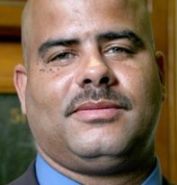
Sgt. Michael Russell
Among the evidence hidden in police files were progress reports from Sgt. Ellis, who handled the case from its outset in 1999. During his presentation, Onumonu cited Ellis’ testimony at his trial that he did not submit the glove in question for DNA trace evidence testing during the time after the murder, because he had no suspects. However, Onumonu said, police progress reports from 1999 showed that Ellis was investigating two other suspects.
Onumonu has filed motions previously requesting that the glove be barred from evidence due to chain of custody issues, but the judges on his case denied the motions.
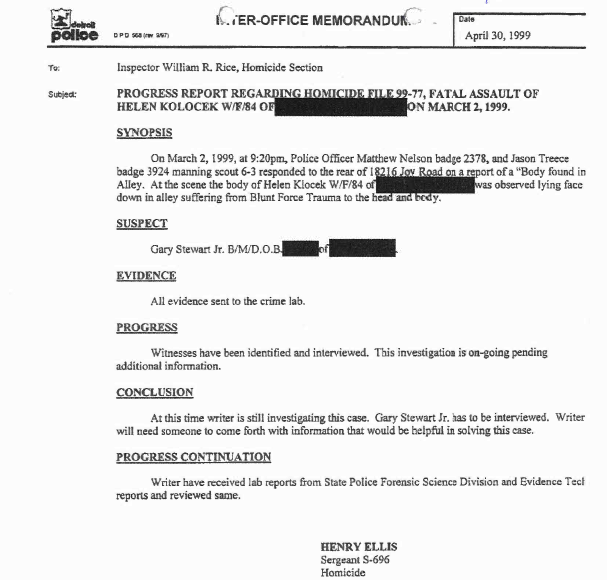
DPD Progress Report by Sgt. Henry Ellis dated April 30. 1999 citing one of two suspects in the murder case.
Prosecutors including the Wayne County Conviction Integrity Unit (CIU) also produced graphs which claimed that Onumonu was working at a plant near to Ms. Klocek’s apartment, where they said the type of glove allegedly found in her car was commonly used by multiple workers. In the graphs, they noted the short distance from his mother’s house in Detroit to the locations where Ms. Klocek’s car and body were separately found.
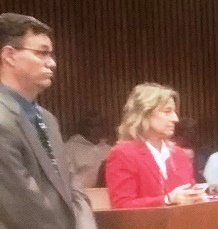
Wayne Co. AP Jason Williams and Valerie Newman, then a SADO attorney, at 2016 hearing.
Onumonu says he was not living with his mother, but in Dearborn Heights at the time. The Wayne Co. CIU reviewed his case twice earlier, according to Onumonu and his mother, and rejected it for further processing. They say that CIU director Valerie Newman showed up at an initial hearing in front of Judge Green, but that Onumonu rejected her participation.
Plymouth Twp. police reported 1n 1999 that they had been investigating multiple burglaries there, many of them involving senior citizens.
Police said the burglaries had taken place in apartments that were temporarily unoccupied while the residents had gone out to work or other matters. They cautioned residents to watch out for cars cruising slowly in the neighborhoods and for any ‘suspicious’ people on foot, and report those to the police.
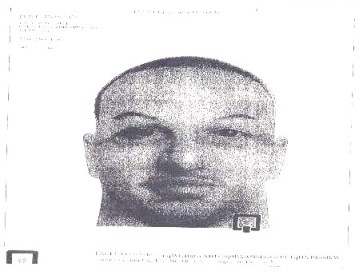
Suppressed 1999 sketch of purse snatching suspect in case.
One eyewitness saw TV coverage of the case in 1999 and contacted police, saying she saw a woman resembling Mrs. Klocek driving with a Black man, in a white car. She was shown a composite sketch of a purse-snatching suspect and said he looked similar to the man. She described him as light-complected, likely with light-colored eyes.
That witness from 1999 was brought forward in 2012 to testify against Onumonu at two preliminary examinations. Both resulted in dismissals of the charges due to the years that had passed since the witness said she sighted the suspect, and the witness’ inability to identify Onumonu in court, among other factors.
Onomonu says that he filed a Brady motion to dismiss the charges again, which was circumvented when the judge in the case at that time privately met with defense and prosecution attorneys in his offices and decided to remand the case back to the 36th District Court for more proceedings.
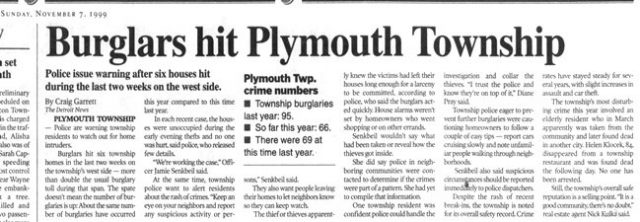
Onumonu had been convicted on an armed robbery charge in 1999, and was sentenced to two to five years in prison. He was being paroled in 2o11 after serving his time, when police and prosecutors intervened in the parole with an arrest warrant in the Klocek case, and he was remanded to custody again. Court records show that he remained in prison for four more years, while the proceedings in that case took place. He was not tried in the Klocek case until 2015.
WAYNE 3RD JUDICIAL CIRCUIT COURT JUDGE TRACY E. GREEN
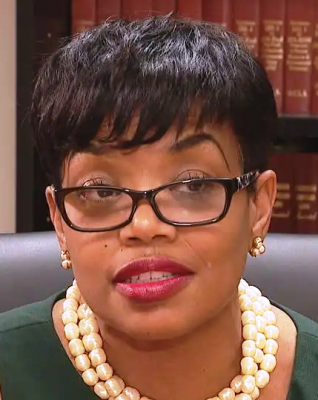
Judge Tracy E. Green
Third Judicial Circuit Court Corporate Counsel Richard Lynch told VOD, “Judge Green is currently on administrative leave as approved by SCAO [State Court Administrator’s Office.] Judge Giovan is the visiting judge assigned to her docket. Formal complaints issued by the Judicial Tenure Commission are matters of public record.”
In 2019, the Michigan Judicial Tenure Commission (JTC) brought charges against Judge Green stemming from a custody dispute between her son and his wife during divorce proceedings. Custody was granted to her son, who later was convicted of child abuse and sent to prison.
The JTC charges said Judge Green did not report her knowledge of the abuse. They were based on the testimony of the two young children to the Judicial Tenure Commission. Currently, the Michigan Supreme Court, the only entity that can actually remove a judge from the bench, has the charges under review.
According to public filings on the JTC website at Welcome To Michigan Judicial Tenure Commission, Judge Green is represented by the Bloomfield Hills-based firm of Plunket Cooney, and is vigorously contesting the charges, which were initiated while she was running for election. As in Onumonu’s case, the mainstream media has indiscriminately smeared Judge Green without citing her publicly available responses. As a sitting judge, she cannot respond publicly to the charges lodged against her.
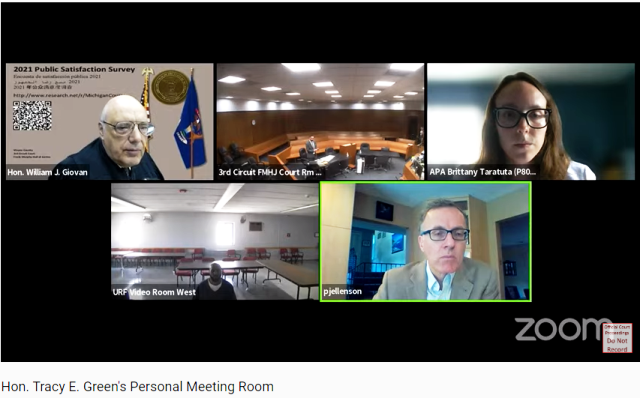
Screenshot of Nosakhare Onumonu’s hearing June 29; top left is Judge William Giovan. Atty. Peter Ellenson is currently assisting as defense counsel, AP Brittney Taratuta is at top right.During a scheduled hearing today on the case, Judge William Giovan said, “I was instructed by the Chief Judge that all matters that had been submitted to Judge Green and argued and were awaiting only a decision from Judge Green were to be decided by Judge Green. This case calls for Judge Green to rule on it. I agree with the defendant that it seems she issued an inconsistent order. I’m going going to recap what’s happened today and tell Judge Green that the parties are awaiting further action on her part on this matter.”
Judge Giovan set another meeting date for July 27 and said he would send copies to both the prosecution and the defense of his written request to Judge Green.
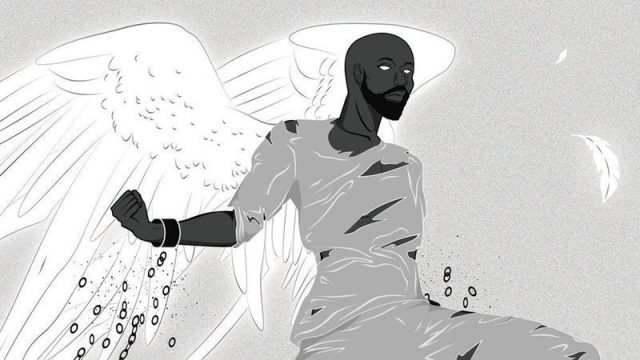
Petition · Wrongfully Convicted Michigan DOC Captive! Help Exonerate Nosakhare Onumonu! · Change.org_
####################################################################################
 VOD’s staff lives either on limited fixed incomes or is incarcerated. We are not paid; we publish the newspaper pro bono. Help keep us afloat by chipping in so stories on this Prison Nation and Police State, and related matters, can keep coming! Any amount is appreciated.
VOD’s staff lives either on limited fixed incomes or is incarcerated. We are not paid; we publish the newspaper pro bono. Help keep us afloat by chipping in so stories on this Prison Nation and Police State, and related matters, can keep coming! Any amount is appreciated.
DONATE TO VOD
https://www.gofundme.com/donate-to-vod
(Contact editor for details on other ways to send funds, at 313-825-6126 or diane_bukowski@hotmail.com.)
####################################################################################


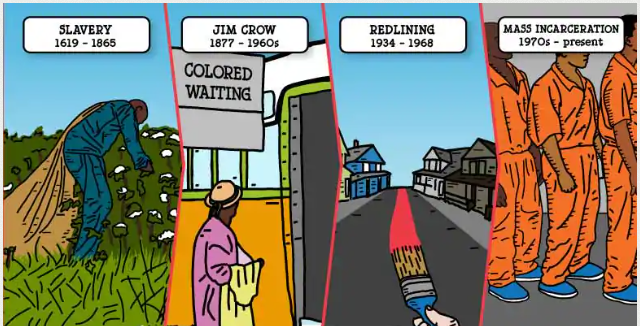
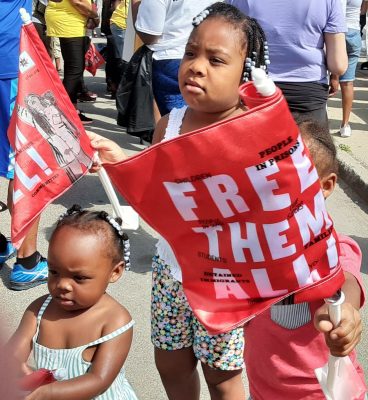

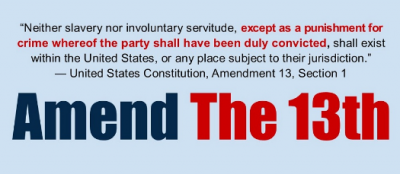 DETROIT — Millions celebrated this country’s first Juneteenth holiday this week, commemorating the liberation of enslaved peoples after the Civil War with fireworks, dance, song, and prayer. But under the provisions of the 13th Amendment to the U.S. Constitution, over two million people remain enslaved in U.S. prisons as a result of mass incarceration, the majority of them Black, descendants of those enslaved peoples.
DETROIT — Millions celebrated this country’s first Juneteenth holiday this week, commemorating the liberation of enslaved peoples after the Civil War with fireworks, dance, song, and prayer. But under the provisions of the 13th Amendment to the U.S. Constitution, over two million people remain enslaved in U.S. prisons as a result of mass incarceration, the majority of them Black, descendants of those enslaved peoples.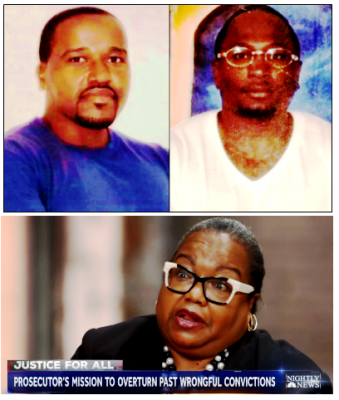
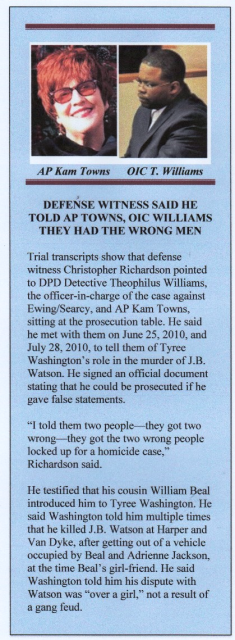 “To show, Agents brought forth one of their top informants. He was taken in front of multiple grand juries about the present matter and found to be credible… Christopher Richardson disclosed that his very own blood cousin William Beal and and [his] federally charged co-defendant, Tyree Washington was/is responsible for the instant crimes and charges presently in front of this court.”
“To show, Agents brought forth one of their top informants. He was taken in front of multiple grand juries about the present matter and found to be credible… Christopher Richardson disclosed that his very own blood cousin William Beal and and [his] federally charged co-defendant, Tyree Washington was/is responsible for the instant crimes and charges presently in front of this court.” 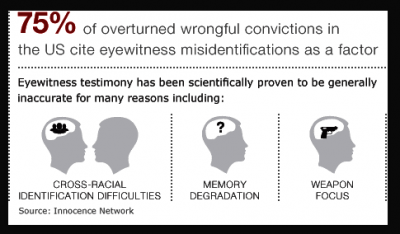 In his “Motion to Take Judicial Notice of Key Facts that Lend Credence to the Granting of Bond,” Ewing notes that eyewitness identifications are the most common factor leading to to wrongful convictions in the U.S. Citing trial transcripts, he breaks down factors in the eyewitness identifications at his trial by Raymond Love and his wife Jendayi Love, who were stopped in traffic at the scene of the shooting of J.B. Watson.
In his “Motion to Take Judicial Notice of Key Facts that Lend Credence to the Granting of Bond,” Ewing notes that eyewitness identifications are the most common factor leading to to wrongful convictions in the U.S. Citing trial transcripts, he breaks down factors in the eyewitness identifications at his trial by Raymond Love and his wife Jendayi Love, who were stopped in traffic at the scene of the shooting of J.B. Watson.
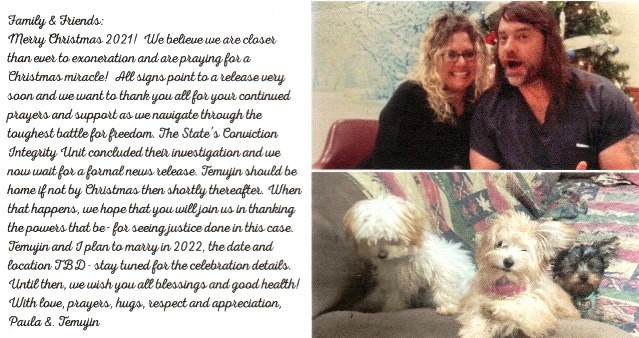
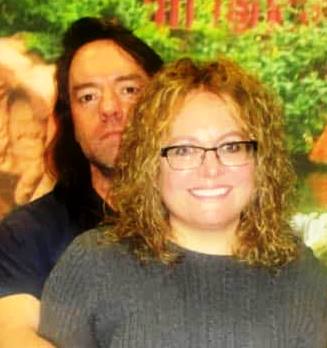


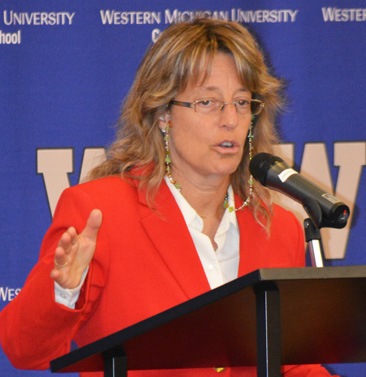
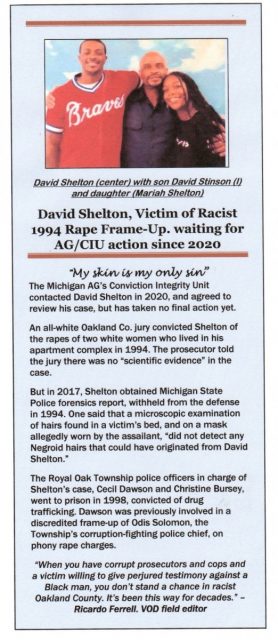 Newman’s stance on Kensu’s case runs counter to what Robyn Frankel told “Proving Innocence,” an organization originally set up by former TV news reporter Bill Proctor.
Newman’s stance on Kensu’s case runs counter to what Robyn Frankel told “Proving Innocence,” an organization originally set up by former TV news reporter Bill Proctor.

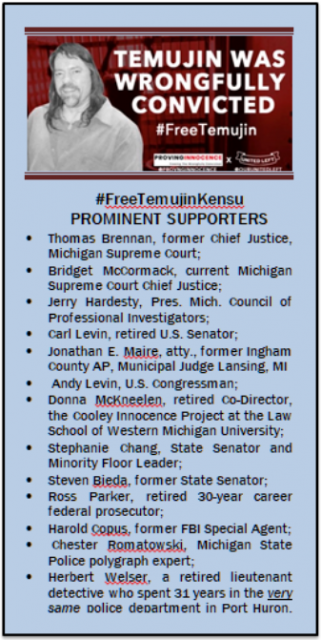 After beginning the brief with the statement in red above, they write in part, “. . .MCL 770.1 stands as a substantive ground for relief independent of any provided by the Michigan Court Rules. The State of Michigan passed MCL 770.1 into law to correct wrongful convictions within the State of Michigan, by providing substantive relief from judgment from trial courts ‘when it appears to the court that justice has not been done.’ Statutes passed into law in the State of Michigan may not be overridden by court rules. . . MCL 770.1 stands as a substantive law independent of the Michigan Court Rules.”
After beginning the brief with the statement in red above, they write in part, “. . .MCL 770.1 stands as a substantive ground for relief independent of any provided by the Michigan Court Rules. The State of Michigan passed MCL 770.1 into law to correct wrongful convictions within the State of Michigan, by providing substantive relief from judgment from trial courts ‘when it appears to the court that justice has not been done.’ Statutes passed into law in the State of Michigan may not be overridden by court rules. . . MCL 770.1 stands as a substantive law independent of the Michigan Court Rules.”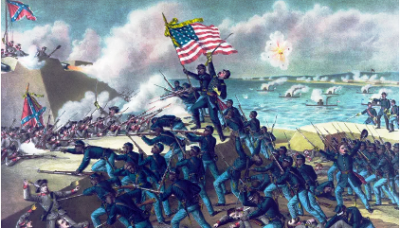

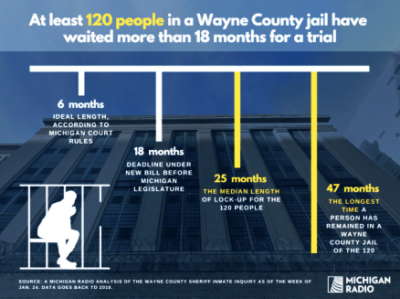 Erickson did not address VOD’s request for a copy of the directive ordering the shut-down, or to requests for comment on the shut-down of prisoners’ access to legal research, the cancellation of recreation time, or the number of prisoners in the jail, including the time they have spent there.
Erickson did not address VOD’s request for a copy of the directive ordering the shut-down, or to requests for comment on the shut-down of prisoners’ access to legal research, the cancellation of recreation time, or the number of prisoners in the jail, including the time they have spent there.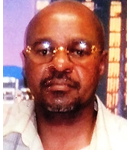
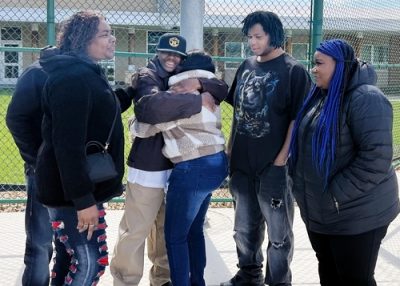
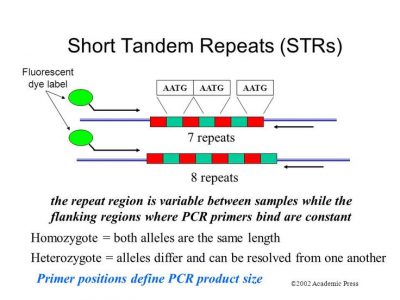 The Statement and Calhoun’s court documents show that court-appointed attorneys at the trial and appellate levels advised Calhoun to plead guilty on Feb. 21, 2007 prior to his sentencing March 27, 2007, and to waive his appeal of right on September 10, 2007. Prior to those events, Calhoun was determined “competent to waive his Miranda rights” after a forensic exam that also found he still had “cognitive deficits.”
The Statement and Calhoun’s court documents show that court-appointed attorneys at the trial and appellate levels advised Calhoun to plead guilty on Feb. 21, 2007 prior to his sentencing March 27, 2007, and to waive his appeal of right on September 10, 2007. Prior to those events, Calhoun was determined “competent to waive his Miranda rights” after a forensic exam that also found he still had “cognitive deficits.”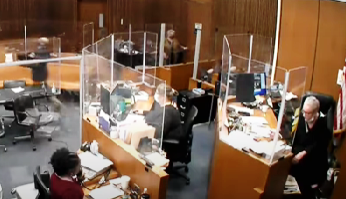
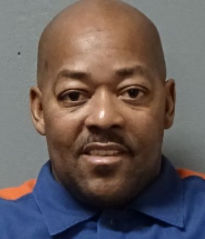
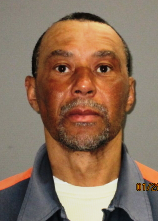

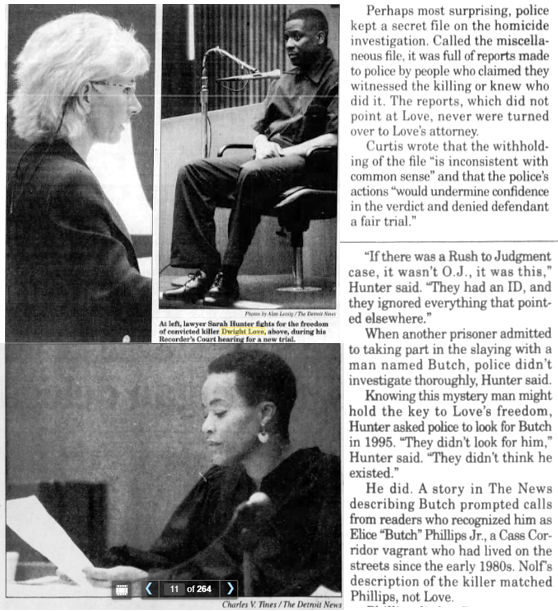
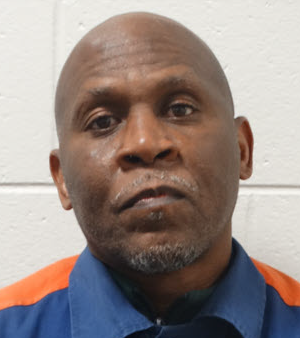

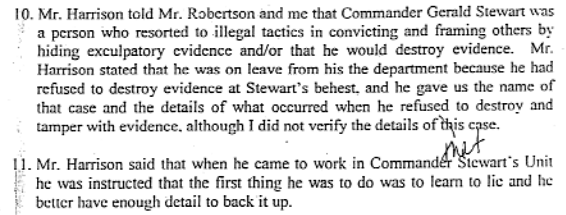
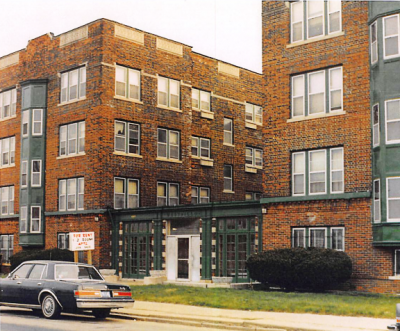


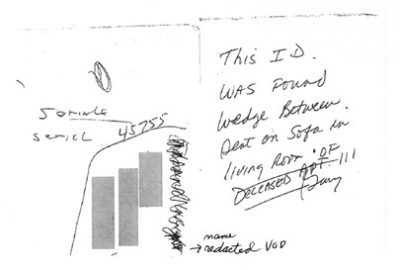
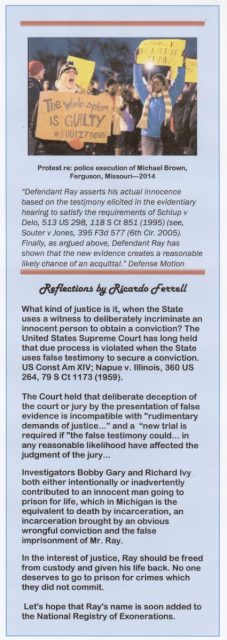 Police referred him and his girlfriend, listed as a witness, who was with him when he saw Ray in bloodied clothing, for polygraph exams twice, but each time the two failed to show up after first stating they would be there.
Police referred him and his girlfriend, listed as a witness, who was with him when he saw Ray in bloodied clothing, for polygraph exams twice, but each time the two failed to show up after first stating they would be there.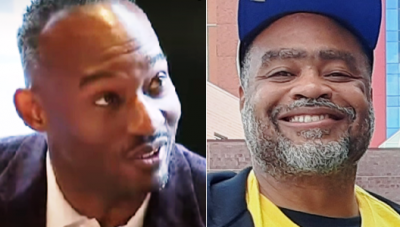

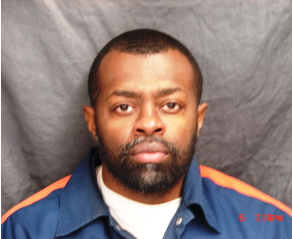
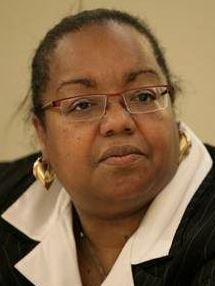
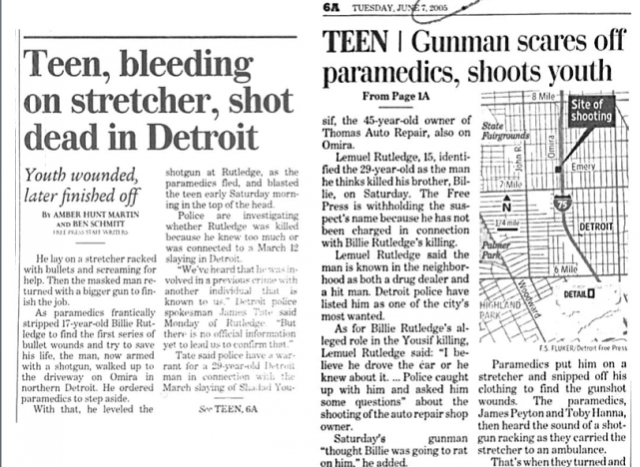
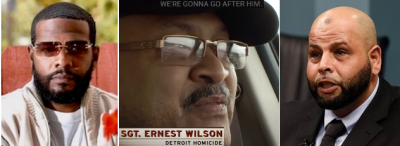

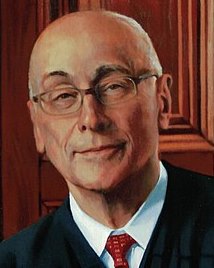
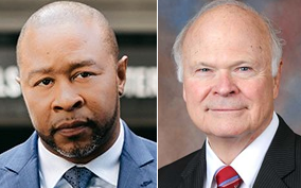

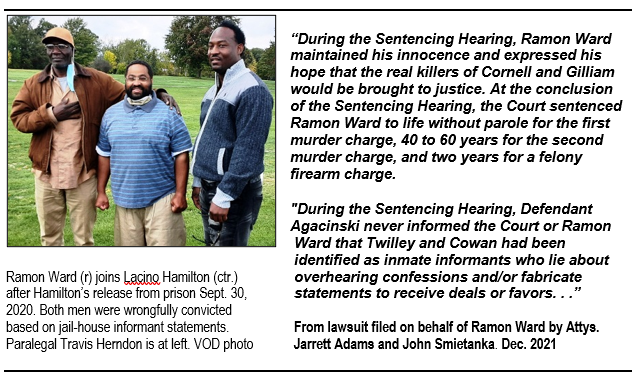 The lawsuit also describes complicit behavior by other AP’s not cited as defendants. They include Thomas Beadle, Rosemary Gordon, William Peterson, and James Heaphy.
The lawsuit also describes complicit behavior by other AP’s not cited as defendants. They include Thomas Beadle, Rosemary Gordon, William Peterson, and James Heaphy.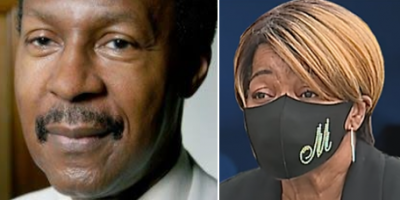
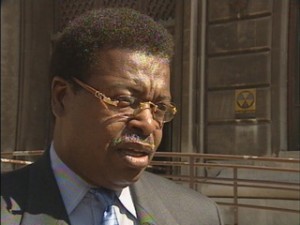
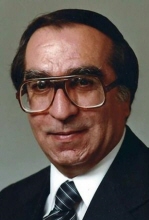


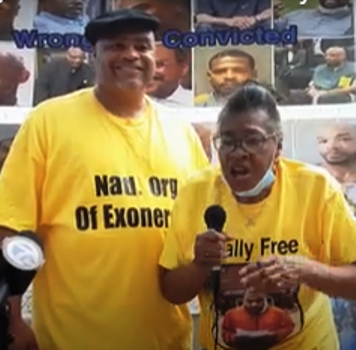
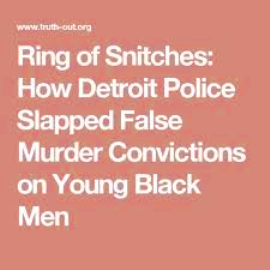 In a May, 2017 Detroit Metro Times article, journalist Ryan Felton exposed the rampant use of jailhouse informants (snitches) by DPD/WCPO. He reported that Edward Allen told a private investigator that Detroit police filed over 100 murder cases as a result of such testimony.
In a May, 2017 Detroit Metro Times article, journalist Ryan Felton exposed the rampant use of jailhouse informants (snitches) by DPD/WCPO. He reported that Edward Allen told a private investigator that Detroit police filed over 100 murder cases as a result of such testimony.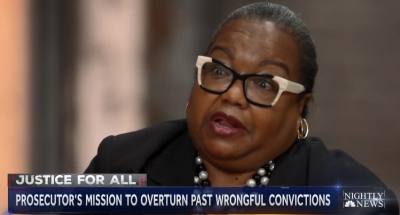


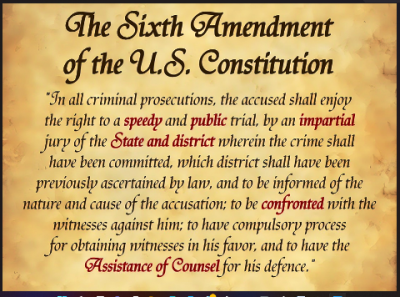
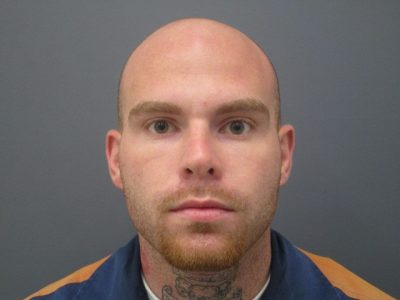
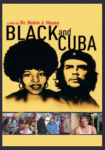 “Prison was hell. It was a new kind of plantation. I felt like an escaped slave. What I saw in the United States in those prisons was slavery, it was Black people with chains, in cells, it was just poor people stepped on and smashed. I’ll never forget what I saw. I’ll never forget what I’ve lived through . . . what my people have lived through.” –Assata Shakur in new documentary, Black and Cuba
“Prison was hell. It was a new kind of plantation. I felt like an escaped slave. What I saw in the United States in those prisons was slavery, it was Black people with chains, in cells, it was just poor people stepped on and smashed. I’ll never forget what I saw. I’ll never forget what I’ve lived through . . . what my people have lived through.” –Assata Shakur in new documentary, Black and Cuba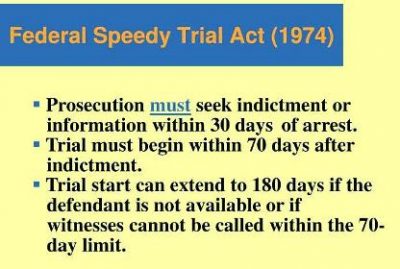 These men and women watch from the jail’s narrow windows every day as thousands of party-going visitors flood downtown Detroit’s streets around the prison, and others make their way to work, oblivious to the plight of those inside the jail.
These men and women watch from the jail’s narrow windows every day as thousands of party-going visitors flood downtown Detroit’s streets around the prison, and others make their way to work, oblivious to the plight of those inside the jail.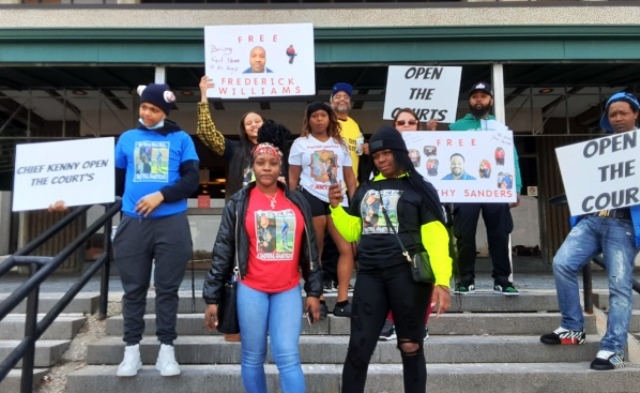
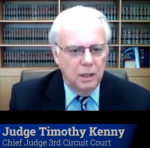 Wiley has been held since Oct. 3, 2017 on capital (life) charges which were dismissed twice in 2017 and 2019 after lengthy trial proceedings including jury trials. He was not released after those trials because judges dismissed the cases WITHOUT prejudice.
Wiley has been held since Oct. 3, 2017 on capital (life) charges which were dismissed twice in 2017 and 2019 after lengthy trial proceedings including jury trials. He was not released after those trials because judges dismissed the cases WITHOUT prejudice.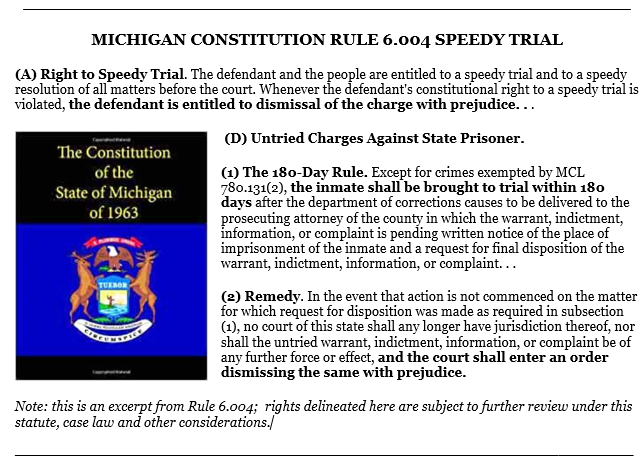
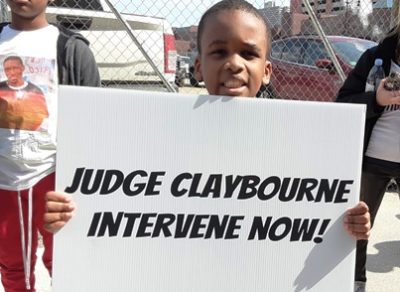
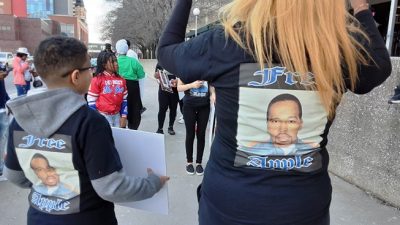
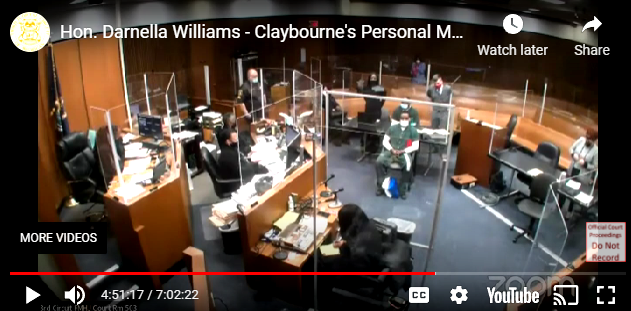
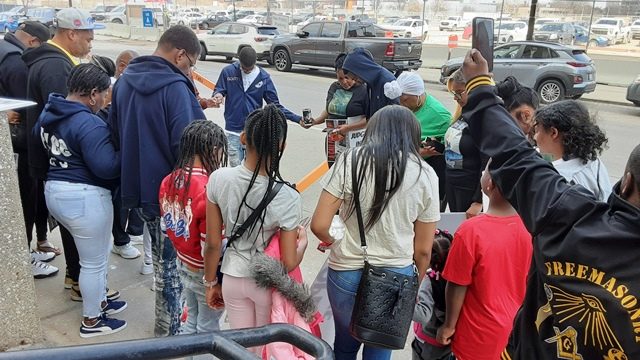

 In the capital, most observable to the west, Kyiv city authorities say that some 55 buildings have been damaged and that 222 people have died since February 24. It is a city of 2.8 million people.
In the capital, most observable to the west, Kyiv city authorities say that some 55 buildings have been damaged and that 222 people have died since February 24. It is a city of 2.8 million people.
 Editor, Voice of Detroit (Please note: to contact the organizers of these events, use the phone number above for Operation Liberation.)
Editor, Voice of Detroit (Please note: to contact the organizers of these events, use the phone number above for Operation Liberation.)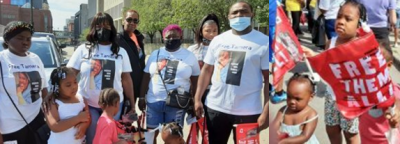

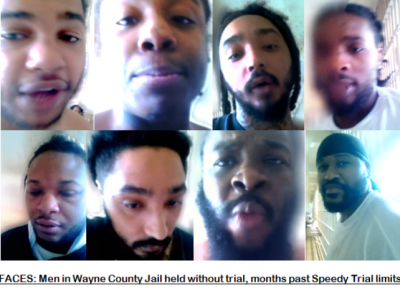
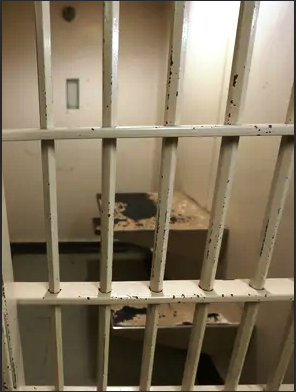
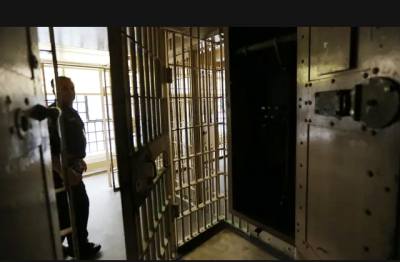
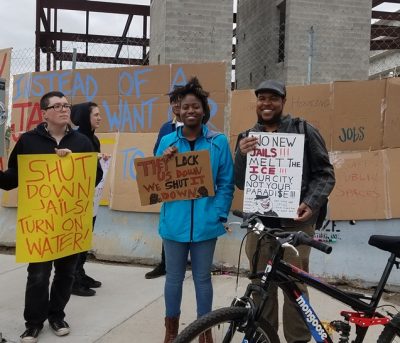

 The
The 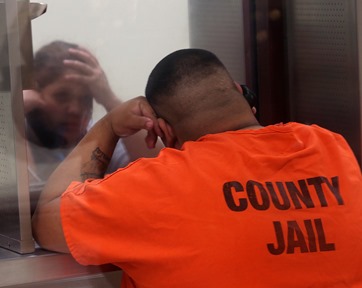 Although COVID restrictions have been lifted, for the most part, in Michigan and across the country, family members still cannot visit their loved ones in the Wayne County Jail, and even attorney visits are sometimes constricted. Courtrooms are not open to the public in-person.
Although COVID restrictions have been lifted, for the most part, in Michigan and across the country, family members still cannot visit their loved ones in the Wayne County Jail, and even attorney visits are sometimes constricted. Courtrooms are not open to the public in-person.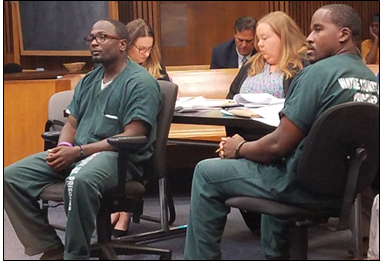

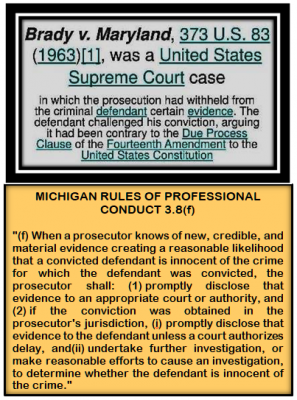
 As far back as 1915, the Supreme Court held that when a state grants a criminal defendant a right to direct appeal, “The proceedings in the appellate tribunal are part of the process of law under which he is held in custody by the state, and to be considered in any question of alleged deprivation of his life or liberty, contrary to the Fourteenth Amendment.” See
As far back as 1915, the Supreme Court held that when a state grants a criminal defendant a right to direct appeal, “The proceedings in the appellate tribunal are part of the process of law under which he is held in custody by the state, and to be considered in any question of alleged deprivation of his life or liberty, contrary to the Fourteenth Amendment.” See 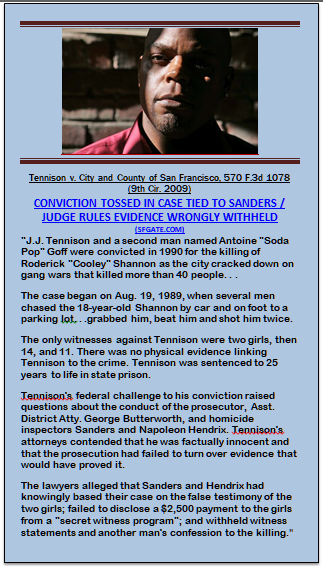 Courts thew out the convictions in proceedings after trial, citing Brady. Tennison later won a $4 million wrongful conviction settlement and was fully exonerated after the prosecutor filed for dismissal of the case.
Courts thew out the convictions in proceedings after trial, citing Brady. Tennison later won a $4 million wrongful conviction settlement and was fully exonerated after the prosecutor filed for dismissal of the case.
 The cases of Ewing and Searcy have been featured on various national wrongful conviction websites, including a series of six episodes in which legal criminal conviction experts have reviewed the Ewing-Searcy case and found it woefully wanting in evidence to convict.
The cases of Ewing and Searcy have been featured on various national wrongful conviction websites, including a series of six episodes in which legal criminal conviction experts have reviewed the Ewing-Searcy case and found it woefully wanting in evidence to convict.
